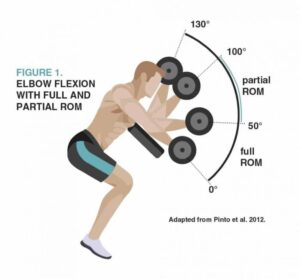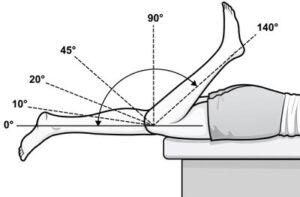When it comes to weight lifting, the precision and technique of each repetition plays a crucial role in maximizing the effectiveness of a workout. Understanding and implementing various techniques can significantly impact muscle development (hypertrophy), strength gains, and overall fitness results. Among the techniques frequently discussed are Full Range of Motion Reps, Long-Length Partial Reps, and Short-Length Partial Reps. Each of these concepts represents a distinct approach to executing exercises, influencing the range of movement and muscle engagement. In this educational exploration, we delve into the definitions and explanations of each, shedding light on their unique characteristics, benefits, and potential considerations. By gaining a comprehensive understanding of these techniques, you can make informed choices tailored to your individual goals and preferences.

Full Range of Motion:
An exercise that goes through a full range of motion (ROM) is performed by moving through the maximum range that is anatomically feasible for the joint(s). Prioritizing Full Range of Motion exercises offers several benefits to both muscle development and joint health. These exercises promote comprehensive muscle activation, as the muscles are worked throughout the entire movement, in both shortened and lengthened positions. Full range of motion repetitions can also foster balanced growth and enhanced strength across the entire range of movement. Lastly, if you’re looking to improve joint mobility and flexibility, while simultaneously reducing the risk of stiffness or injury, these should become a regular aspect in your workouts.
Full range of motion repetitions are most commonly used to improve hypertrophy and strength gains.
Long-Length Partials:
Long-Length Partials (LLP) are half-repetitions performed when the muscle is at its longest length. This is typically in the first half of the range of motion. For years, many have criticized the use of these repetitions, often accusing lifters of “cheating.” It’s important to note that effective long-length partials are not “cheating” as long as form is not compromised and the weight is controlled throughout the movement.
Engaging in Long Length Partials introduces unique advantages to muscle development and joint health. By specifically targeting muscles during the extended range of motion, these partial movements contribute to enhanced muscle fiber recruitment. Meaning they are an effective training method for building strength and hypertrophy. Shorter ranges of motion provide athletes the ability to load more weight without reaching failure as quickly. These half-reps are also invaluable when it comes to training while avoiding an injury.
While you can do a set of only long-length partials, they can also be an effective way to train past failure. Consider adding 3-5 long-length partials once you are no longer able to complete a full range of motion.

Figure 2: Long-Length Partial from 0° to between 45° and 90°. Short-Length Partials begin between 45° and 90° and go to 140°.
Short-Length Partials:
Short-Length Partials (SLP) are half-repetitions performed when the muscle is contracted and at its shortest length. While research shows these are not as effective at building hypertrophy as full ROM or LLP repetitions, they do still have their place. Short-length repetitions can be invaluable for lifters who are struggling working through sticking points or creating explosive movements. You may consider using pins, a box, or a rack to help you safely limit the range of motion.
Conclusion
In summary, the three distinct approaches to weight lifting—Full Range of Motion (ROM), Long-Length Partials (LLP), and Short-Length Partials—offer varied benefits and applications. Full Range of Motion exercises prioritize a comprehensive movement, contributing to balanced muscle growth and improved joint health. Long-Length Partials target muscles at their longest length, enhancing fiber recruitment and providing a unique method for building strength and hypertrophy. On the other hand, Short-Length Partials focus on contracting muscles at their shortest length, serving as a valuable tool for addressing sticking points and generating explosive movements.
In conclusion, the choice between these techniques depends on individual fitness goals and specific training needs. Full Range of Motion exercises excel in promoting overall muscle activation and joint health, making them a fundamental component of a well-rounded workout routine. Long-Length Partials offer a specialized approach for maximizing muscle fiber recruitment and strength gains, while Short-Length Partials play a unique role in overcoming sticking points and developing explosive power. By understanding and strategically incorporating these techniques, individuals can tailor their weight lifting routines to optimize both muscle development and joint function.
Leave a Comment